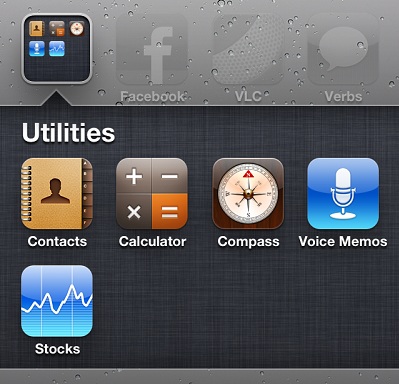Next week at WWDC, Apple will unveil the sixth iteration of its mobile operating system, iOS. Although Apple has added a lot of features over the course of these five years, the layout of iOS has remained almost consistent.
That, however, doesn't mean that every
element in the user interface has remained exactly the same throughout.
Apple has tinkered around with the look and feel of several standard UI
elements over the years.
Rene Ritchie over at iMore writes
about the evolution in Apple's design principles, which has mostly been
introducing more and more skeumorphic interfaces into apps. Skeumorphic
design, in the digital world, is trying to make digital interfaces look
like objects from the real world. The wooden shelf in iBooks is a
pretty good example of skeumorphic design.
Skeumorphism wasn't a big part of the
first few versions iOS (called iPhone OS back then). With the exception
of the Notes app, which was inspired by the yellow legal pads, most of
Apple's apps followed a standard, purely digital design philosophy,
which Rene calls the "world of pinstripes." Pinstripes continue to
appear in many of Apple's in built apps even now.
It was the release of iOS 4
that unleashed Apple's skeumorphic design monster. Game Center debuted
with an interface made up of wooden navbars, tab bars, and a green felt
background. The whole set up looks like a felt gaming table.
Along with wooden bars, Apple also
introduced linen textures in iOS as a metaphor for elements that are in
the background, like the app switcher and folders.
If the wood in the Game Center app
wasn't enough, Apple's iBooks app also incorporated wooden textures in
the form of a faux bookshelf. The newly introduced iTunes U app also has a similar skeumorphic interface. (Apple wasn't the first one to come up with such an interface though.)
Continuing its use of textures, Apple
introduced Find my Friends and Reminders, both with a leather texture.
Find my Friends, with its stitched leather interface, tries to look like
the digital variant of an address book, while Reminders' black leather
interface apes old leather bound agendas, which very few iOS users would
have even heard of.
(Apple's designers even carried on a lot of these textures, and skeumorphic designs in general to Mac OS X Lion.)
Although it doesn't seem like Apple's
going to wash its hands off skeumorphic design in an instant, especially
with so many of its apps already following the design philosophy, it
appears that Apple is gearing to change the default color scheme of
standard iOS UI elements to silver from the blue we're all used to.
The silver color scheme is already being
used in a number of apps including most inbuilt iPad apps, and a number
of newly released Apple apps like iPhoto and the WWDC app.
If the rumors of Apple debuting a TV operating system are true, it'll be interesting to see what sort of design philosophy does Apple follow.
In his post over at iMore, Rene
has also created mockups of what each pattern would look like when
applied to the Settings app, which is the most common type of standard
interface found in iOS apps. Head over to this link to see the mockups.













0 Comment
Post a Comment